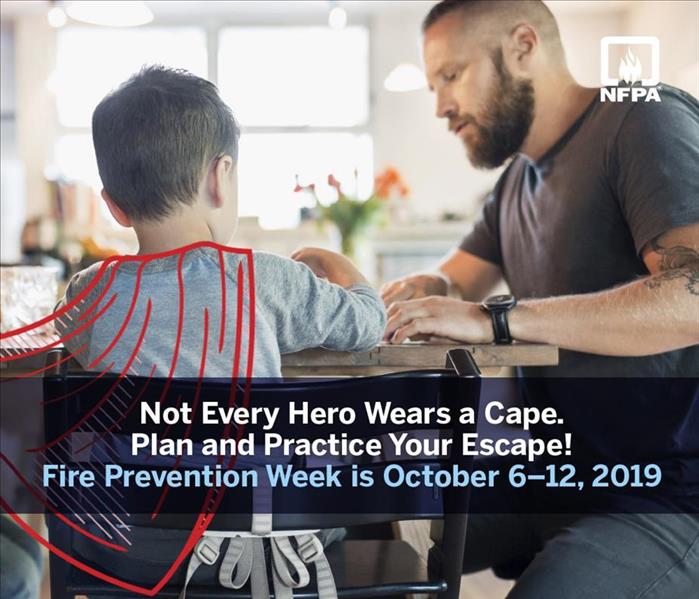Not Every Hero Wears a Cape
10/2/2019 (Permalink)
National Fire Prevention Week is October 6-12th, 2019. Here at SERVPRO of Carleton/Maybee we strive to help our communities be prepared in the event of a fire. We honor our local Fire Departments and pass out fire prevention materials to local schools and libraries. Here are some tips for fire escape and planning:
Home Fire Escape Planning and Practice
Home fire escape planning and drills are an essential part of fire safety. A home fire escape plan needs to be developed and practiced before a fire strikes.
• Home fire escape planning should include the following:
• Drawing a map of each level of the home, showing all doors and windows
• Going to each room and pointing to the two ways out
• Making sure someone will help children, older adults, and people with disabilities wake up and get out
• Teaching children how to escape on their own in case you cannot help them
• Establishing a meeting place outside and away from the home where everyone can meet after exiting
• Having properly installed and maintained smoke alarms
• Home fire escape practice should include the following:
• Pushing the smoke alarm button to start the drill
• Practicing what to do in case there is smoke: Get low and go. Get out fast.
• Practicing using different ways out and closing doors behind you as you leave
• Never going back for people, pets, or things
• Going to your outdoor meeting place
• Calling 9-1-1 or the local emergency number from a cell phone or a neighbor’s phone Smoke Alarms
• Smoke alarms detect and alert people to a fire in the early stages. Smoke alarms can mean the difference between life and death in a fire.
• Working smoke alarms cut the risk of dying in a home fire in half.
• Install smoke alarms in every sleeping room, outside each separate sleeping area, and on every level of the home, including the basement.
• Test smoke alarms at least once a month using the test button.
• Make sure everyone in the home understands the sound of the smoke alarm and knows how to respond. Cooking
• Cooking is the leading cause of home fires and home fire injuries. Thanksgiving is the leading day for fires involving cooking equipment.
• The leading cause of fires in the kitchen is unattended cooking.
• Stay in the kitchen when you are frying, boiling, grilling, or broiling food.
• If you are simmering, baking, or roasting food, check it regularly and stay in the home.
• Keep anything that can catch fire away from your stovetop. Heating
• Heating equipment is one of the leading causes of home fires during the winter months.
• Space heaters are the type of equipment most often involved in home heating equipment fires.
• All heaters need space. Keep anything that can burn at least 3 feet (1 meter) away from heating equipment.
• Have a 3-foot (1-meter) “kid-free zone” around open fires and space heaters.
• Purchase and use only portable space heaters listed by a qualified testing laboratory.
• Have a qualified professional install heating equipment.
• Maintain heating equipment and chimneys by having them cleaned and inspected by a qualified professional at least once a year.





 24/7 Emergency Service
24/7 Emergency Service
